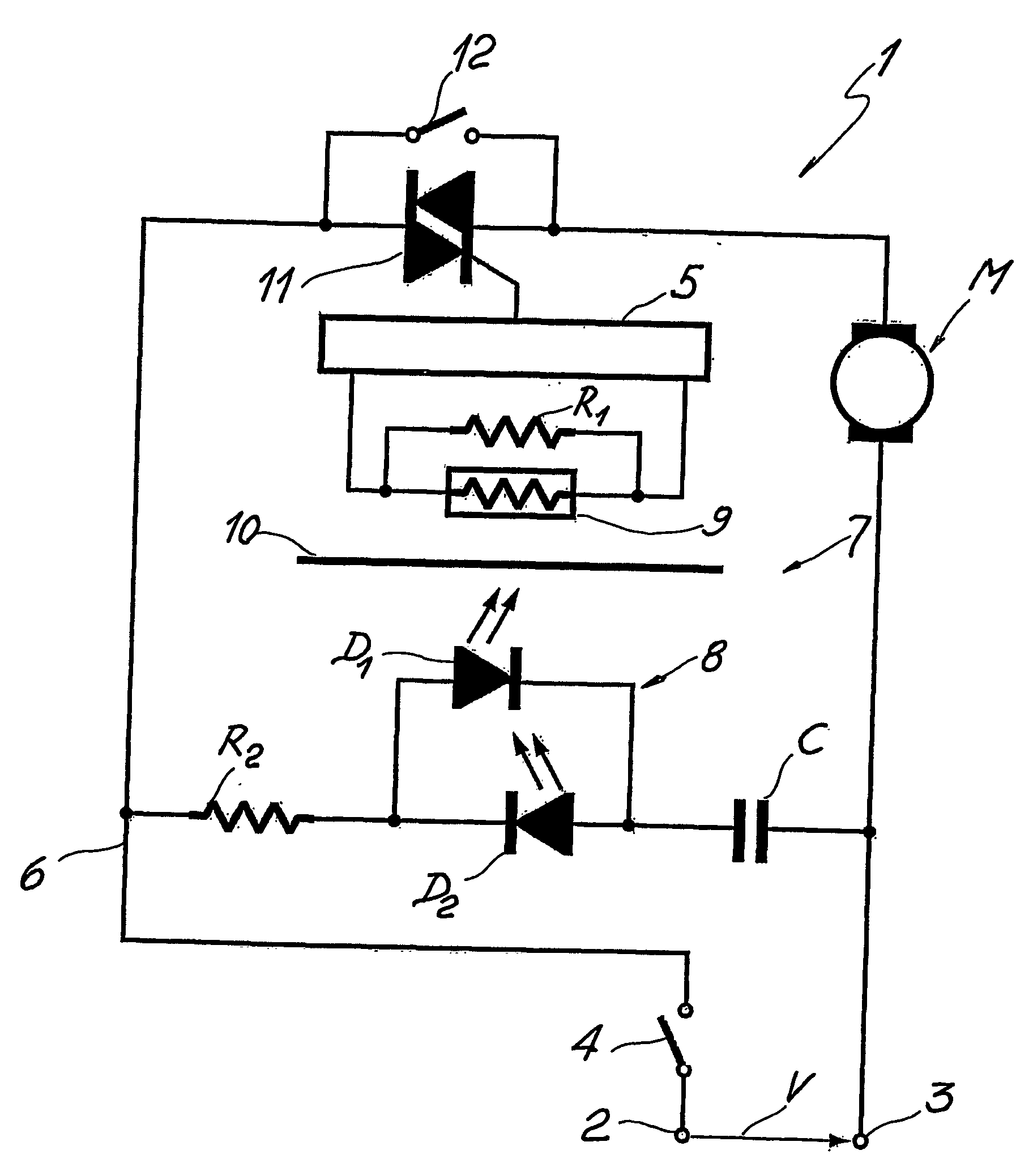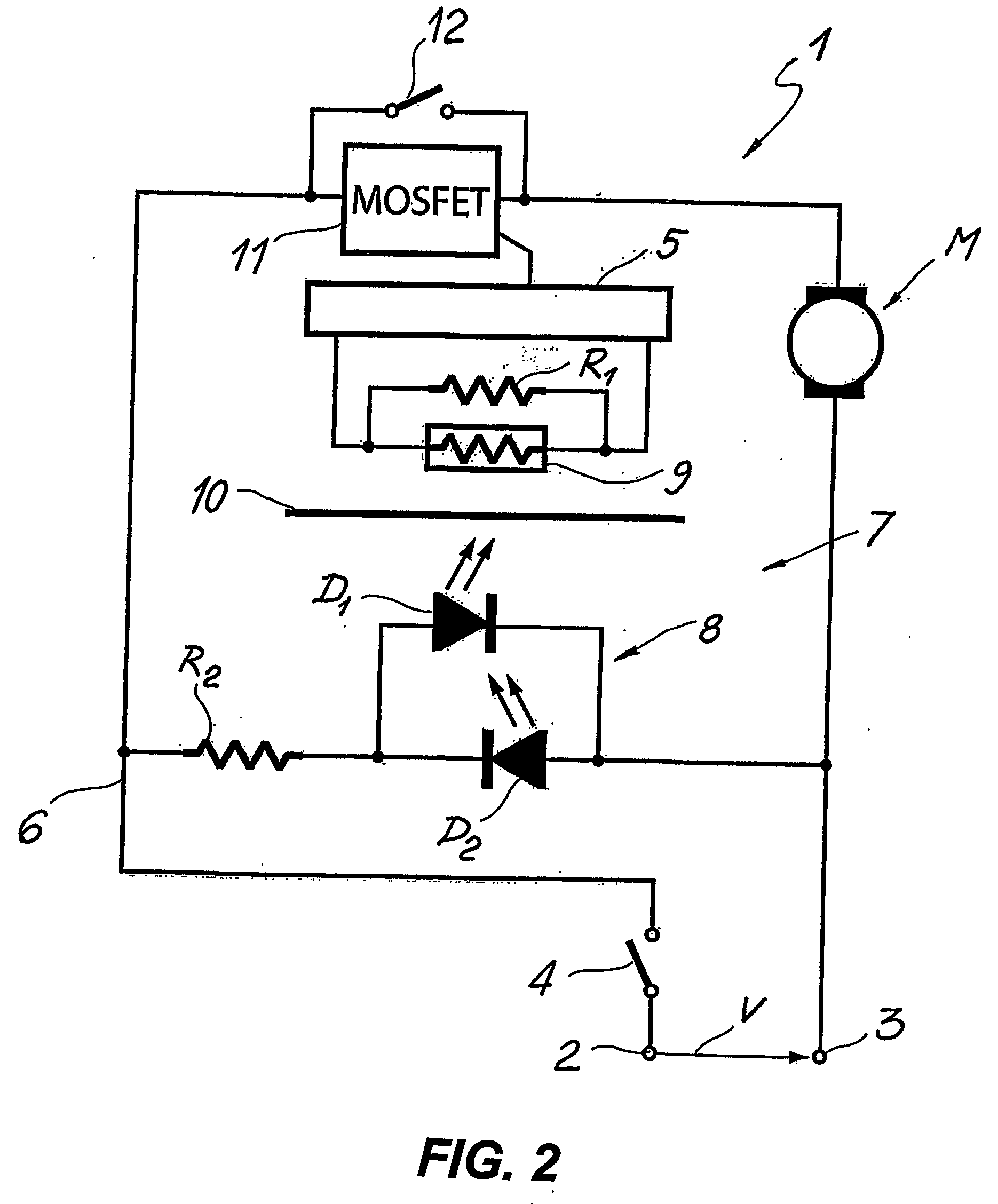Control device for variable speed electric motors, particularly for power tools
a technology of electric motors and control devices, which is applied in the direction of control systems, dc motor speed/torque control, electric motor speed/torque regulation, etc., can solve the problems of deterioration of electrical contacts, friction between two parts, and wear of electrical contacts, so as to reduce the quantity of light transmitted, easy to compensate, and low dust sensitivity
- Summary
- Abstract
- Description
- Claims
- Application Information
AI Technical Summary
Benefits of technology
Problems solved by technology
Method used
Image
Examples
Embodiment Construction
[0043] With reference to the above referenced drawings, a speed control device for varying and controlling the speed or other operating parameter of a motor M is overall designated with the reference numeral 1.
[0044] Motor M may be any AC or DC motor and is advantageously mounted to any hand held power tool or other small size or miniaturised electrically powered apparatus.
[0045] In the embodiment shown in FIG. 1, motor M is of the AC type and is connected to the terminals 2, 3 of an electric power source V by means of the speed control device 1. The electric power source V is usually equal to the power supply voltage, namely 230V in Europe and 115V in North America.
[0046] Optionally, a power switch 4 may be serially connected to the terminal 2 of the electric power source V to selectively switch current to the speed control device 1 and to the motor M.
[0047] The electric power applied to the motor M is controlled by means of an electronic driver unit 5 serially connected along ...
PUM
 Login to View More
Login to View More Abstract
Description
Claims
Application Information
 Login to View More
Login to View More - R&D
- Intellectual Property
- Life Sciences
- Materials
- Tech Scout
- Unparalleled Data Quality
- Higher Quality Content
- 60% Fewer Hallucinations
Browse by: Latest US Patents, China's latest patents, Technical Efficacy Thesaurus, Application Domain, Technology Topic, Popular Technical Reports.
© 2025 PatSnap. All rights reserved.Legal|Privacy policy|Modern Slavery Act Transparency Statement|Sitemap|About US| Contact US: help@patsnap.com



